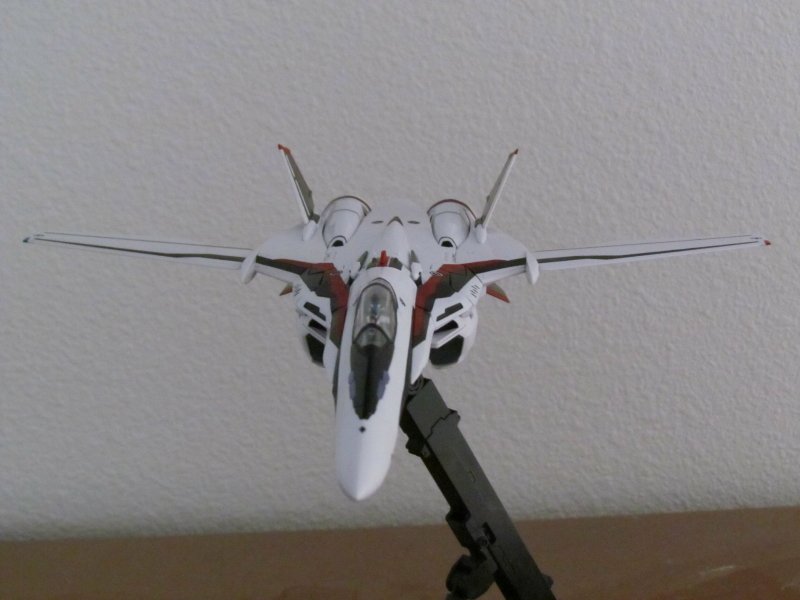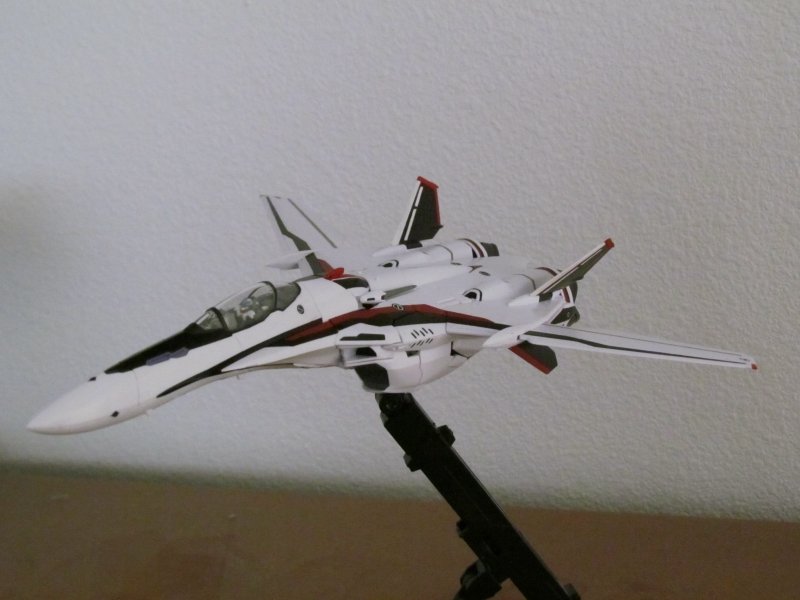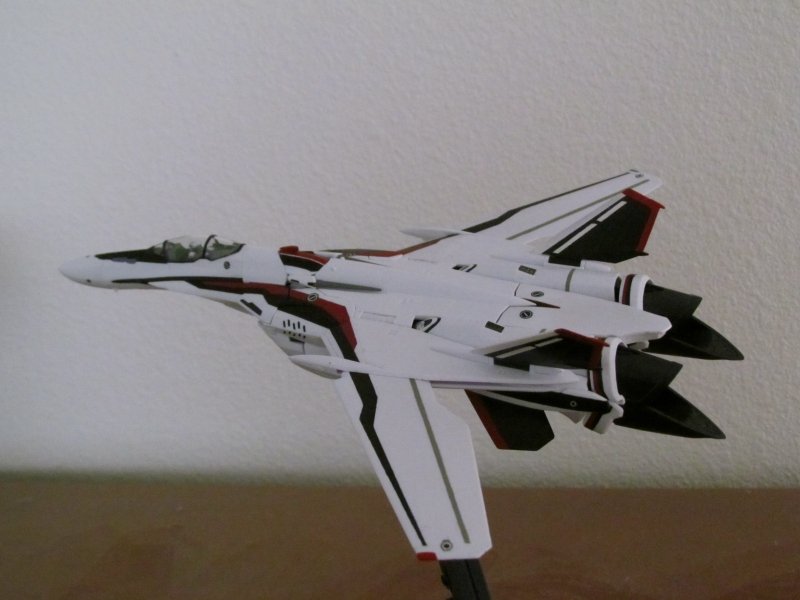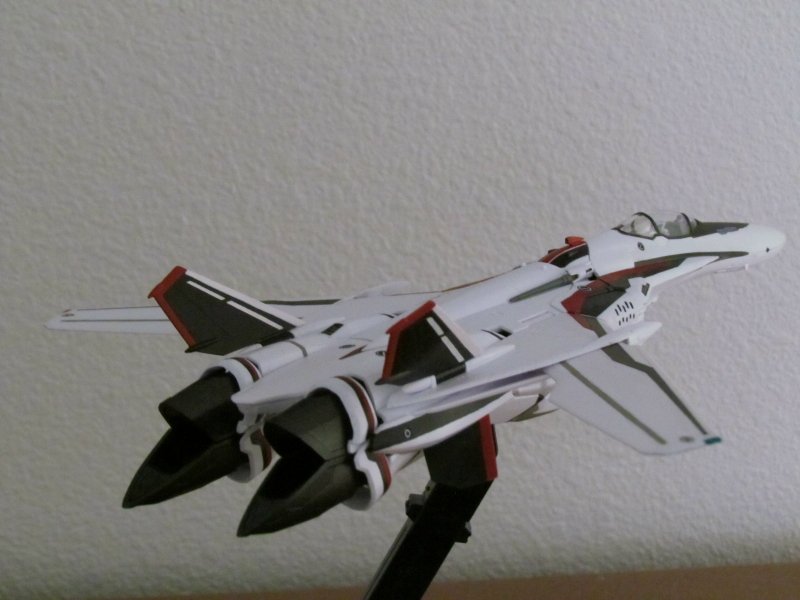-
Posts
10819 -
Joined
-
Last visited
Content Type
Profiles
Forums
Events
Gallery
Everything posted by Chronocidal
-
I'm .. cautiously enthusiastic. I really do want the G, but I cannot sit up all hours of the night waiting for these stupid 2 min preorder windows. Just going to put this out there ahead of time.. I wonder if it would be a good idea to organize a pre-order group buy. It's stupid that the thought even has a reason to occur, but for those of us who can be up during these ridiculous preorder windows, I think it'd be greatly appreciated if we could figure out a way to distribute any extra preorders our members could get for others. It'd have to be on a volunteer basis of course. In my case, if I happen to get on HLJ at the right moment, and can afford it, I can try and order as many extras as they'll let me, and just resell them here at cost.
-
I'm anxiously awaiting news about the group buy here, it's been so long, and my VF-25s feel so naked...
-
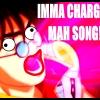
All Things Videogame Related: EXTREME VS!!
Chronocidal replied to Keith's topic in Anime or Science Fiction
As much of a game nerd as I am, I have to say that the airbrush and compressor will give you many more hours of enjoyment than any game ever could. Plus a sense of accomplishing something real. I was actually tempted to try GW2, but honestly, I was disappointed when I watched the combat videos, expecting something far more unique. I'm personally a lot more interested in Phantasy Star Online II, though I'm concerned a bit about what the change to a free-to-play model will do to it. I was considering paying anyway, but most "free-to-play" games have a way of costing more in the long run.- 6945 replies
-
- Video games
- PS3
-
(and 12 more)
Tagged with:
-
They on sale? I've been holding out for the VF-17D and a Miria S, but I might pick one of the regular ones up eventually. Mostly been saving for the bluray sets and armor packs though recently.
- 1053 replies
-
- Diamond Calling
- Nightmare
-
(and 4 more)
Tagged with:
-
Actually, I don't know if I'd call the paint job a great result. You can't tell from those shots, but the only paint that went on smooth at all is the black, and even that got a bit lumpy in places. I used all flat paints on it, and those do seem to give a better finish by hand than glosses, but it's only because you don't see the flaws a gloss coat would show.
-
Heh.. I bought an airbrush and compressor quite a while back, and still haven't touched it. I should one of these days, but I love hand painting so much... As far as brushing goes though.. I'm not sure any acrylics brush well over large areas, due to the nature of how they cure. When I paint with them, they tend to dry so quickly, that a second stroke will actually scrape up the paint you just laid down. The best success I've had requires you to be very patient, laying down many individual coats over a long period of time, usually thinned with quite a bit of water. I'll let the water carry the paint, then when it evaporates, it leaves a thin coat. It's probably not the best method, but it's what I did for a lot of that VF-25 I painted by hand. One note... black generally is really easy to paint with, as are most darker grays. Whites, light grays, and brighter colors though might give you nightmares. Red is especially problematic. Honestly.. I think for hand brushing, oil-based enamels have always worked better. They're thicker, stick to the plastic better, and smooth out easily. They're just a pain to clean up, and it's much harder to fix any mistakes you make. The ability to take a wet toothpick and scrape away any mistakes is what made me pick up so many acrylics in the first place.
-
It does my heart good to see that Crusader shuttle in such good shape. Mine's sadly yellowed horribly, but I recently bought a giant tupperware tub that I can dunk it in to hopefully restore it. Yeesh.. I need to display something somewhere.. someday. Most of the Valks I have out are kinda scattered across random furniture.. and/or the floor.
- 8203 replies
-
- toys
- collectors
-
(and 22 more)
Tagged with:
-
Yep And actually the nozzles aren't matte, they're a buffed bronze finish. Needed better lighting to see it, but I love how they turned out. That's all bare plastic, with the markings hand painted with a little masking. In hindsight, I wish I'd sprayed it, but I didn't have my airbrush at that point.
-
So I finally got off my butt, and finished the modifications to my VF-25F (the one I posted about building long ago), so I can finally call it nearly done. It's at least assembled now, and the custom wing tabs work beautifully to hold up the legs. Haven't used any stickers or decals on it yet, I'm not sure what I plan to do for the rest of the markings. Everything so far has been painted on, and I really like the way it looks. Haven't transformed it though, because I know I'll probably scratch everything up.
-
Personally, I don't use any stands, because I don't have much room to display stuff. The few Valks I have sitting out are usually just standing on their feet in fighter mode. Usually works really well, except for the oddball valk with strange feet. If I ever do start using stands though, I might make something of my own. Flightpose ones aren't bad, but I've always loved simple pedestal designs. I just think it's so ridiculous how so many stands for Valks take up more space on the shelf than the actual plane.
-
I dunno, Yamata could be plural for Yamato, I guess.. For stand/display ideas, take a look through the collection display topic a bit down the list, you'll find dozens of ideas on how to display anything you might have. You'll see lots and lots of Flightpose stands, those clear, three-pronged, adjustable ones. They're a very popular choice for pretty much any valk of any size, in any mode.
-
Ooh, sweet, a friend of mine mentioned this series in terms of who's involved, but didn't mention the jazz element. I'm going to have to keep an eye on this.
-
I'd most likely get at least one of these, but unless we find some way to make a ton of white replacement parts to match, I don't think customizing is going to go well unless you want a custom P (which many may want anyway ) I'd be really tempted to try and make custom F, but only if we find some way to get F/S style parts molded in white. I'd like everything, but I'd probably be ok with just the wings, head and shoulders. It's easy enough to fill the canard holes, and I don't really mind the ventral fins on the P.
-
You know it's sad, I actually miss all those wacky bionicle sets that used to be so popular.. Not because I'd ever build anything from that line.. but those things were chock full of awesome mech-building pieces. Joints, pistons, etc.. I'm sad my local shop stopped stocking them. What I really really need to build some incredible stuff is for them to come out with an axial version of that massive click joint they make. I've got a ton of the regular ones, but rotating the mounting points to the outside of the disk instead of the edges would make for a wonderful shoulder or hip joint.
-
Wow. I'm sorry, $300? Did Bandai make that few of them?
-
I don't really care about how anything looks at this point. My brain is tripping out on the concept alone. And I love it. How do you kill your future self, when he already knows everything you did to try to kill him, as well as whether or not you actually succeeded? The only way it will happen is if he lets you. Plus, what if you throw in a third self from further down the timeline into the mix? Then you obviously didn't succeed at killing yourself, so you'd better just stop trying, and settle for killing the third version of you, and hope he is still young enough to remember everything, and not try to kill you in self defense. The bad thing about getting so into these time travel stories.. I probably already know where this is going, because it's too simple, and the title is an obvious hint. I hope I'm wrong, because I'd love to see something new and ridiculous added to the standard repertoire of paradoxes that pop up in time travel stories. Even if they don't though, stable time loops are a blast anyway. Worst case, even if the movie sucks, I'll still enjoy having a new time travel plot to attempt to make sense of.
-
Heh, thought the markings were a little different on that one, guess it was just a lighter shade of gray. Still wish they would reissue that kit, or come out with a different set of markings for it. Adding missiles to mount on it would just be icing on the cake.
-
Oh shoot.. more time travel shenanigans... this is a good year.
-
Agreed, I haven't even built my 1/48 YF-19 yet, and it's already lonely! Also, too bad that master file scheme YF-19 isn't in 1/48. Nice to see them releasing more of the 1/48, but I doubt I'd ever use that scheme on one.
-
See, I really want to make a white VF-19F with black stripes, similar to the master file scheme. I think it's just beautiful. The VF-19P is going to be white-ish, so it's a good start, but there's a significant number of parts I'd have to swap out for an F model. The wings/wing gloves, shoulders, hip flaps, head, leg panels (though I actually like the YF-19 style strakes), and canard panel would all need to be replaced with pieces from an F, and that's a lot of blue plastic to paint white, even if I did want to buy a spare VF-19F just to kitbash, and I really don't want to spend that much. I really wish they'd just release an unpainted kit of the VF-19F/S, but given the complexity of this VF-19 design, I get the feeling that will never happen.
- 2099 replies
-

1/60 VF-1 Accessory Parts from Yamato displayed at Wonder Fest
Chronocidal replied to Graham's topic in Toys
I actually wish they'd release these with the DYRL valks. I wouldn't mind having a TV Roy pilot figure, but I prefer to stay away from the bright white plastic if I can since it's so prone to yellowing. Course, I've got plenty of VF-1s already, so it would probably take something really fancy to get me to buy more at this point. -
Sad part is, I don't even want to customize a P.. I want a custom F model.
- 2099 replies
-
Ah, they've got the VF-19S on sale as well, kind of tempted to get a second one to customize. Also, looks like Gamlin's VF-22 is really cheap right now.
- 2099 replies
-
Or, you know, never actually tell anyone what you're making until it's done, and released, and it's too late for them to tell you to sop. It could maybe work, it's just not the way things usually go, because very rarely do you ever see anything that fancy developed by a small enough group to keep things truly under wraps. If you must actually release something, making junky placeholder mechs/planes wouldn't be a bad idea though.
-
Very nice, but it just hits home harder how little of this type of sim we've seen with Macross. If MS Flight Sim would ditch their stupid method of defining collision points, and use something that allows for moving parts, I'm pretty confident I could do a complete 3-mode transformation... but alas, you can't have anything bigger than the landing gear actually move and register properly really, so landing on the engines or walking is pretty much out of the question. Anywho, as nice as it is to have gerwalk mode, the landing made me laugh pretty hard to see it bouncing like that. Now, someone go replace his sounds with actual ones, and it'll be golden. That gunpod sound was.. weird.

